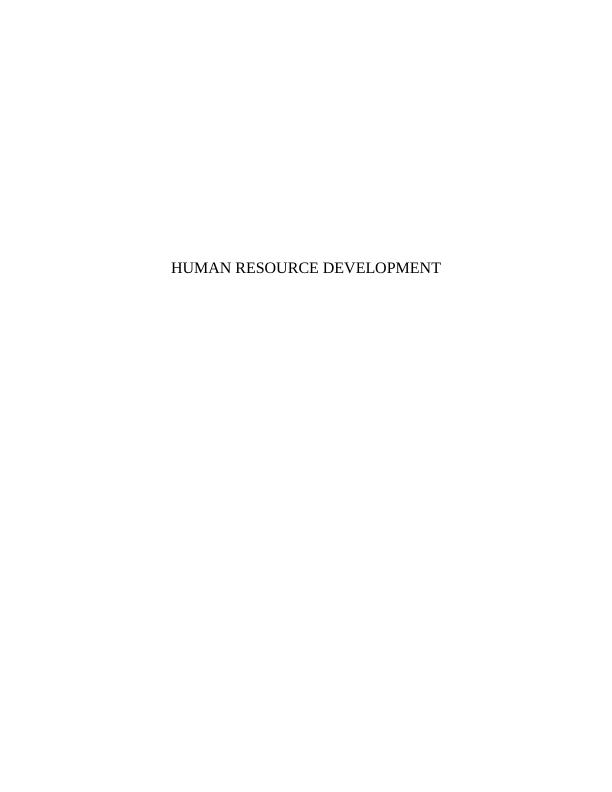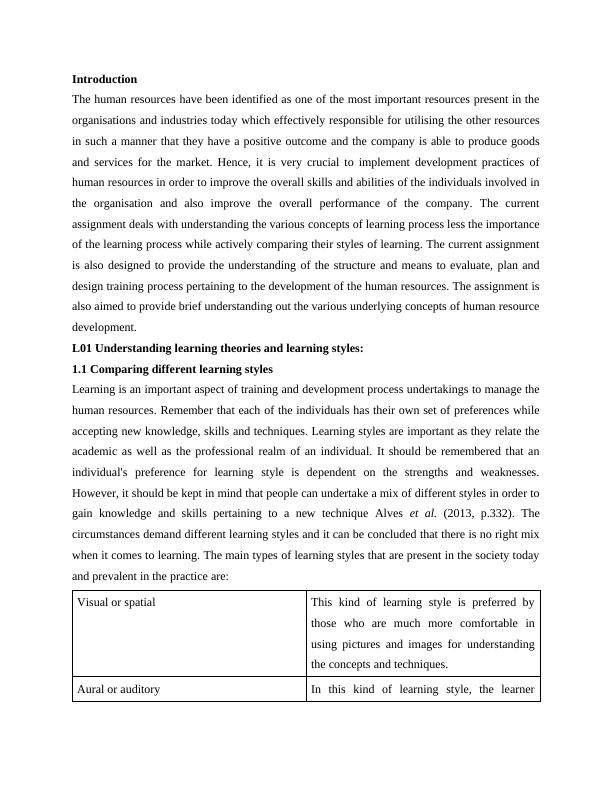HUMAN RESOURCE DEVELOPMENT Table of contents Introduction 3 L01 Understanding learning theories and learning styles
19 Pages5019 Words254 Views
Added on 2019-12-28
About This Document
HUMAN RESOURCE DEVELOPMENT Table of contents Introduction 3 L01 Understanding learning theories and learning styles: 3 1.1 Comparing different learning styles 3 1.2 Explaining the role of the learning curve and the importance of transferring learning to the workplace 5 1.3 Assessing the contribution of learning styles and theories when planning and designing a learning event 5 LO2 Planning and designing training and development 6 2.1 Comparing the training needs for staff at different levels in an organisation 6 2.2 Assessing the advantages and disadvantages of training methods used in an organisation 7
HUMAN RESOURCE DEVELOPMENT Table of contents Introduction 3 L01 Understanding learning theories and learning styles
Added on 2019-12-28
ShareRelated Documents
End of preview
Want to access all the pages? Upload your documents or become a member.
Assignment | Human Resource Development
|21
|6901
|89
Assignment On Human Resource Development | Styles Of Learning
|16
|3723
|146
Role of Learning Curves and Theories in Training, Development and Lifelong Learning
|17
|5472
|330
Report On Different Learning Styles & Theories
|18
|5396
|236
Role of Learning Curves and Theories in Development of Competence Movement
|14
|5238
|396
Styles of Learning and Its Importance in Knowledge Transfer - Assignment
|15
|5122
|74




